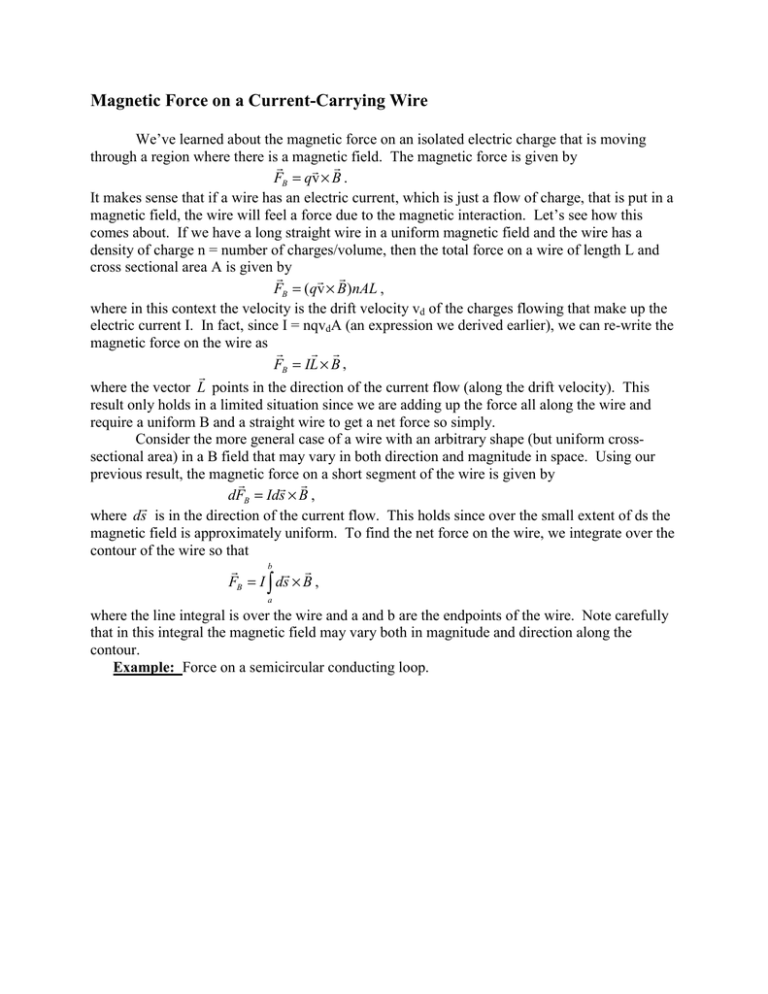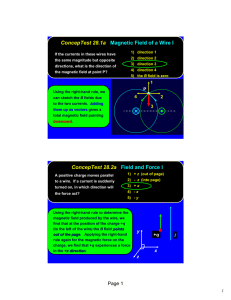Magnetic Force on a Current
advertisement

Magnetic Force on a Current-Carrying Wire We’ve learned about the magnetic force on an isolated electric charge that is moving through a region where there is a magnetic field. The magnetic force is given by G G G FB = qv × B . It makes sense that if a wire has an electric current, which is just a flow of charge, that is put in a magnetic field, the wire will feel a force due to the magnetic interaction. Let’s see how this comes about. If we have a long straight wire in a uniform magnetic field and the wire has a density of charge n = number of charges/volume, then the total force on a wire of length L and cross sectional area A is given by G G G FB = (qv × B)nAL , where in this context the velocity is the drift velocity vd of the charges flowing that make up the electric current I. In fact, since I = nqvdA (an expression we derived earlier), we can re-write the magnetic force on the wire as G G G FB = IL × B , G where the vector L points in the direction of the current flow (along the drift velocity). This result only holds in a limited situation since we are adding up the force all along the wire and require a uniform B and a straight wire to get a net force so simply. Consider the more general case of a wire with an arbitrary shape (but uniform crosssectional area) in a B field that may vary in both direction and magnitude in space. Using our previous result, the magnetic force on a short segment of the wire is given by G G G dFB = Ids × B , G where ds is in the direction of the current flow. This holds since over the small extent of ds the magnetic field is approximately uniform. To find the net force on the wire, we integrate over the contour of the wire so that b G G G FB = I ∫ ds × B , a where the line integral is over the wire and a and b are the endpoints of the wire. Note carefully that in this integral the magnetic field may vary both in magnitude and direction along the contour. Example: Force on a semicircular conducting loop.




